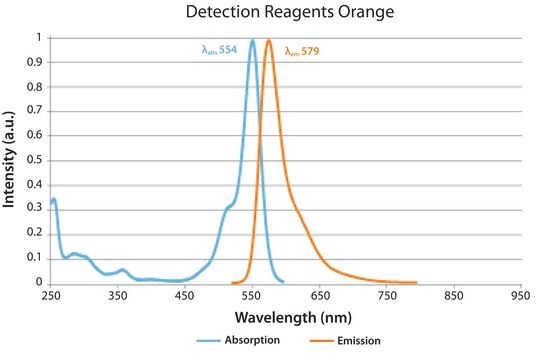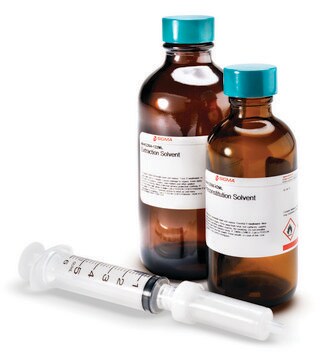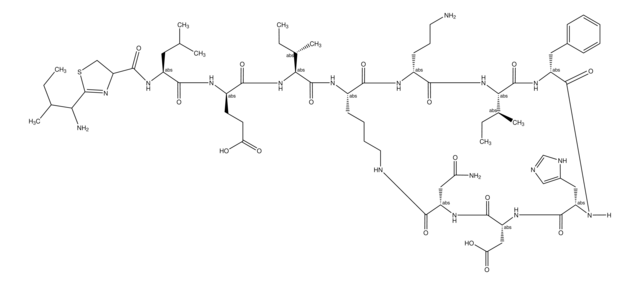MAK227
Chloramphenicol Extraction Kit
sufficient for 40 extractions
About This Item
Produits recommandés
Caractéristiques du produit alternatif plus écologique
Waste Prevention
Learn more about the Principles of Green Chemistry.
sustainability
Greener Alternative Product
Application(s)
cosmetics
food and beverages
sample preservation
Autre catégorie plus écologique
Température de stockage
room temp
Description générale
Application
Click on the following link for a video demonstration of how the kit works
Caractéristiques et avantages
Adéquation
Principe
Produit comparable
Mention d'avertissement
Danger
Mentions de danger
Conseils de prudence
Classification des risques
Acute Tox. 3 Inhalation - Acute Tox. 4 Oral - Aquatic Acute 1 - Aquatic Chronic 1 - Asp. Tox. 1 - Carc. 2 - Eye Irrit. 2 - Flam. Liq. 2 - Repr. 2 - Skin Irrit. 2 - STOT RE 1 Oral - STOT SE 3
Organes cibles
Central nervous system, Liver,Kidney
Code de la classe de stockage
3 - Flammable liquids
Point d'éclair (°F)
10.4 °F
Point d'éclair (°C)
-12 °C
Certificats d'analyse (COA)
Recherchez un Certificats d'analyse (COA) en saisissant le numéro de lot du produit. Les numéros de lot figurent sur l'étiquette du produit après les mots "Lot" ou "Batch".
Déjà en possession de ce produit ?
Retrouvez la documentation relative aux produits que vous avez récemment achetés dans la Bibliothèque de documents.
Notre équipe de scientifiques dispose d'une expérience dans tous les secteurs de la recherche, notamment en sciences de la vie, science des matériaux, synthèse chimique, chromatographie, analyse et dans de nombreux autres domaines..
Contacter notre Service technique









